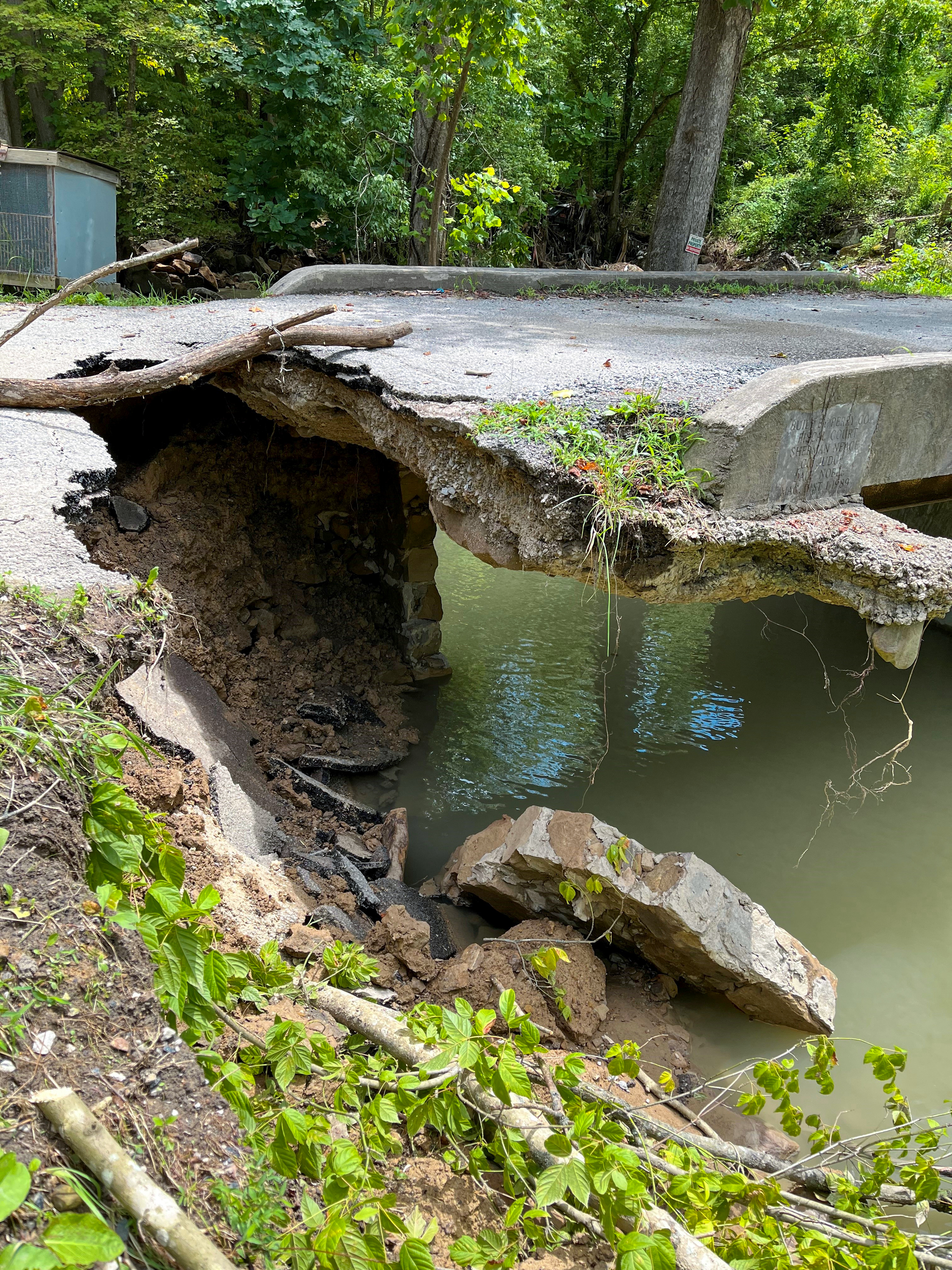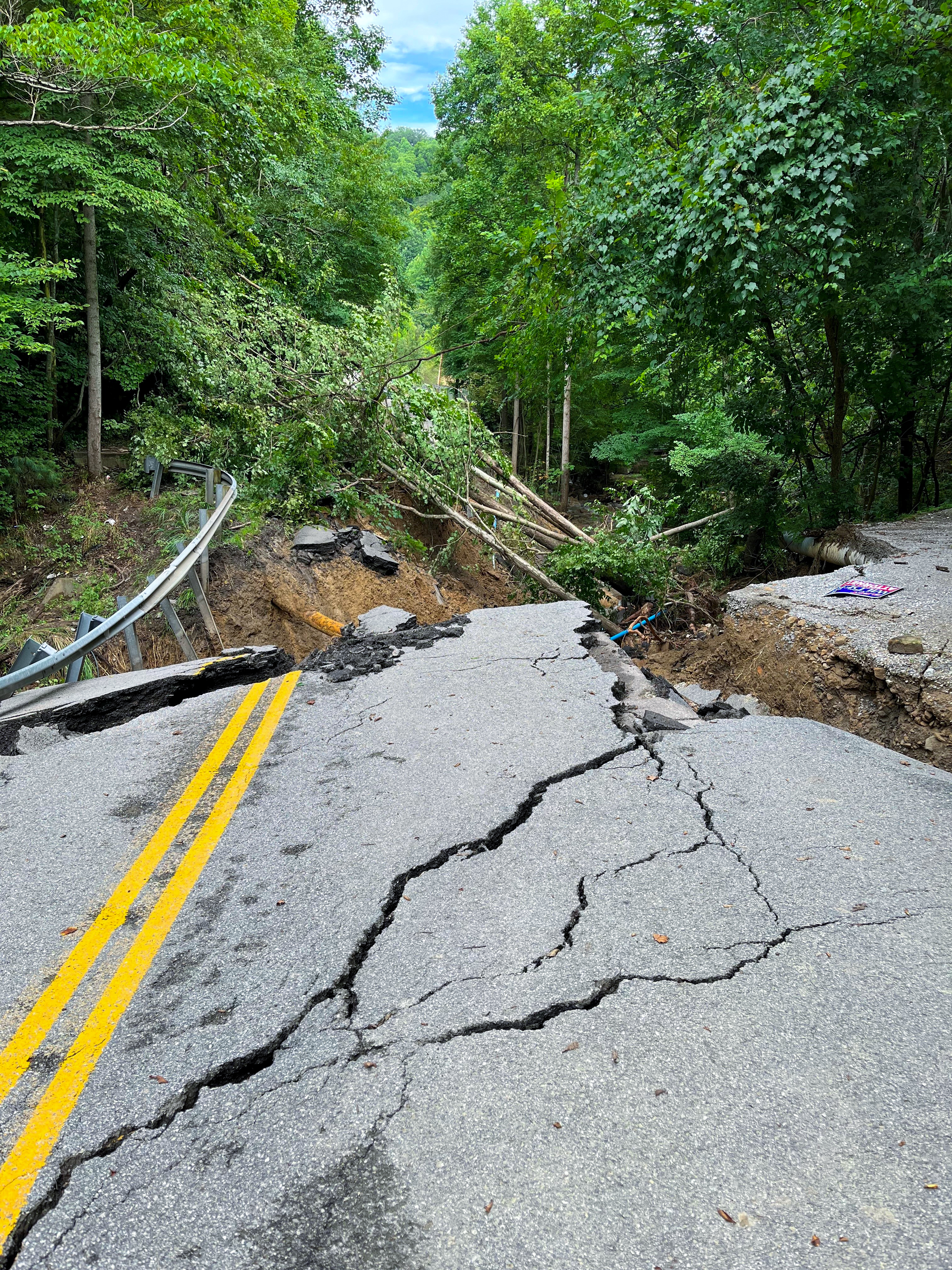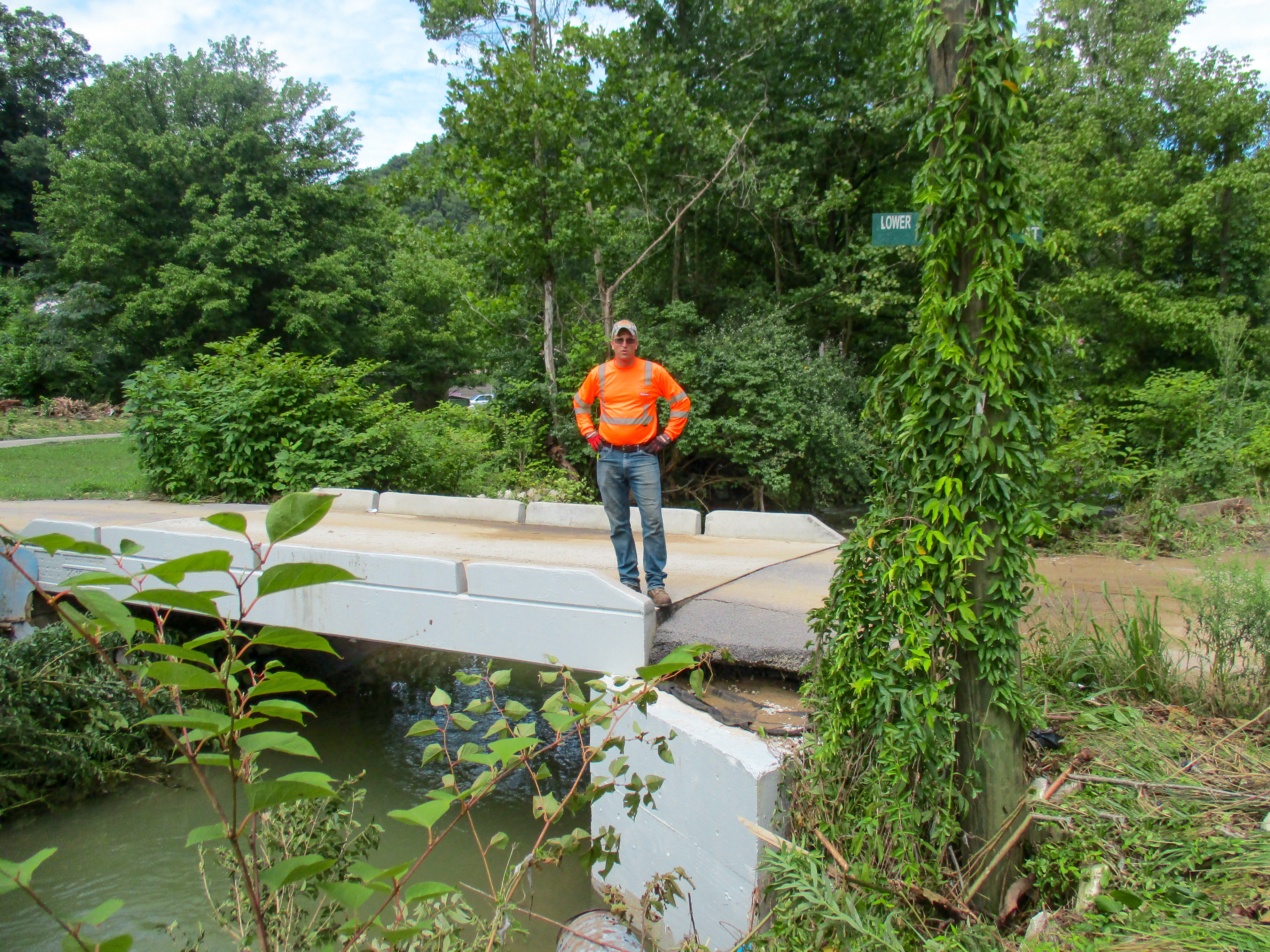Eastern Kentucky Bridge Flood Response
Eastern Kentucky
In the summer of 2022, heavy rains, coupled with a drought that prevented soil from soaking up water, led to devastating flooding throughout Eastern Kentucky. In total, the area received more than 10 inches of rainfall, resulting in the declaration of a state of emergency. Many roads and driveways were blocked by debris or washed away, and hundreds of bridges were damaged. Reestablishing these connections as quickly as could be safely done was of the utmost importance.
Following the initial inspections, several members of Michael Baker’s Bridge Practice quickly assisting the Kentucky Transportation Cabinet (KYTC) in the aftermath of the massive floods. Collectively, KYTC, Michael Baker and other partners inspected nearly 1,100 bridges in seven counties hardest hit by the flooding. Over two days, Michael Baker ensured the safety of 100+ bridges in Perry County. The team recommended the closure of two bridges and identified eight bridges with structural issues that require future assessment.
The team was on the ground with agencies also tasked with disaster relief, including the U.S. Army Corps of Engineers and Federal Emergency Management Agency, the latter of which contributed funding for the emergency work.
Michael Baker was engaged to provide the design for 11 full bridge replacements under a separate contract. Within this group of structures, Michael Baker provided the first full project bid package to be let by KYTC in conjunction with the disaster response. Our team provided a full spectrum of services, from road and bridge design to environmental, right-of-way, utility design and coordination.
The team approached each bridge design individually, selecting the best alternatives for each structure. This resulted in diverse bridge types, including aluminum box culverts, reinforced concrete box culverts and adjacent box beams. All of the structures are expected to be opened in 2023.

Standard of Excellence
“Under traditional circumstances, the design process would have commenced linearly, with hydraulics and surveying work occurring before design. However, the team did not have the luxury of time and had to move these elements forward in parallel. This required Michael Baker to make engineering judgment decisions. At times, the team needed to rework designs based on what was encountered in the field and during construction. This flexibility allowed the Michael Baker team to move the project into construction fast, restoring access for residents as quickly as possible.”
-Project Manager



